6.15. Tait Radio DMR/MPT Recording Interface¶
6.15.1. Tait Radio DMR/MPT Recording Interface Introduction¶
The purpose of this document is to describe the steps to ensure a successful integration between a NexLog DX-Series and Tait DMR (Digital Mobile Radio) system.
The document assumes knowledge of the NexLog front panel interface and the browser based configuration manager and does not discuss recording interfaces beyond the Tait DMR integration. It also assumes familiarity with configuring the Tait system. For more details on these interfaces, please refer to their respective manuals.
6.15.2. Add Virtual Recording Interface¶
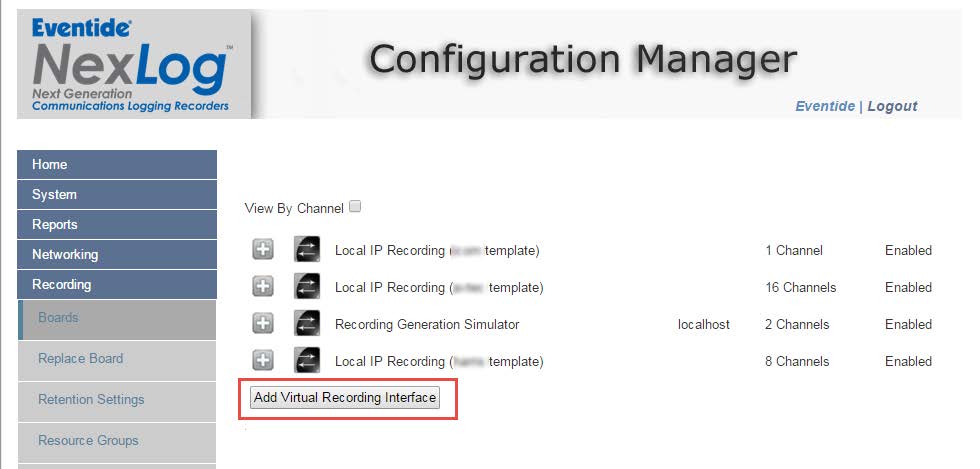
Fig. 6.124 Add Interface¶
Select the number of IP channels/number of talk paths
Note
This is the maximum number of talk paths between the NexLog and Tait Radio that can be recorded. Not to be confused with “Talk Groups”, multiple Talk Groups can be on one “Talk Path”.
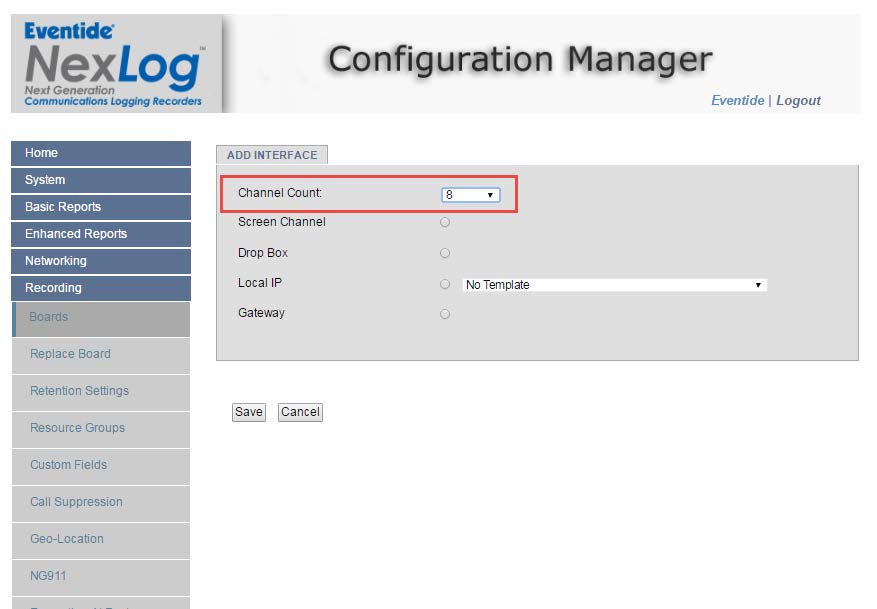
Fig. 6.125 Select IP Channel Count¶
Select the “Tait Radio DMR/MPT Recording Interface” Template

Fig. 6.126 Select Interface¶
Fill in the “Tait Radio DMR/MPT Recording Interface” template fields:
The following figure has the fields populated for illustrative purposes, the actual values in each installation will most likely be different. Verify each value with the Tait Radio ST or the Customer Network Administrator.
Template Field Detail
Destination Port: Destination UDP port on the recorder where the Tait system is configured to send Voice Recorder Protocol traffic.

Fig. 6.127 Destination Port¶
Create MPT1343 Fleet Definitions(optional): Here you can create a list of fleet definitions that can be used to map a fleet to a meaningful channel name under the Channel Name Mapping section. Note, Group and Radio IDs come over the wire in MPT1327 format, which may or may not match with a fleet definition that has been created. When fleet number in the MPT1327 address matches one of the definitions, it is converted into a MTP1343 address, then the MTP1343 address would be put into channel mapping section, to map the fleet to a meaningful channel name. For more information on MPT1337 and MPT1343 formatting, please see: https://en.wikipedia.org/wiki/MPT-1327
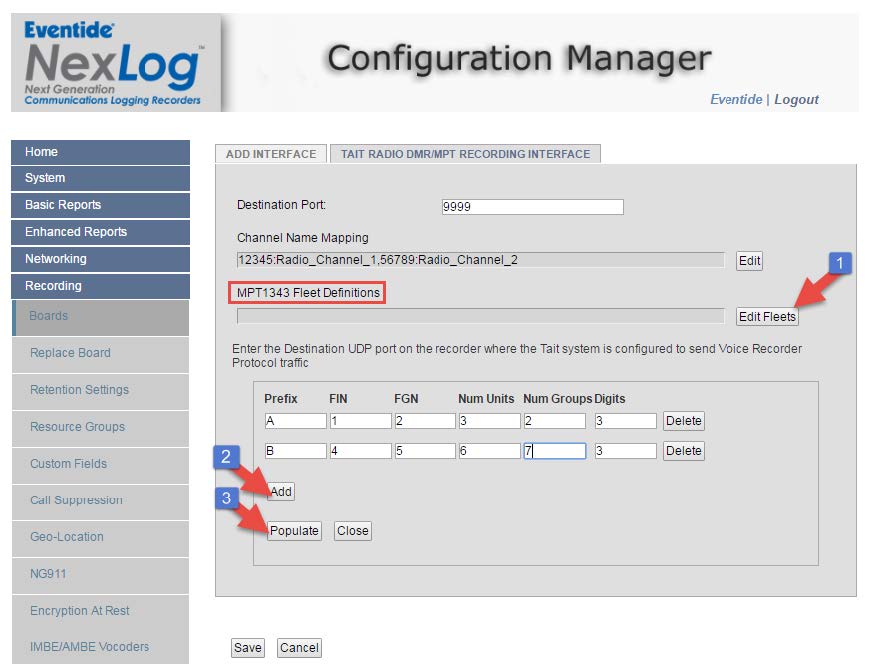
Fig. 6.128 MPT1343 Fleet Definitions¶
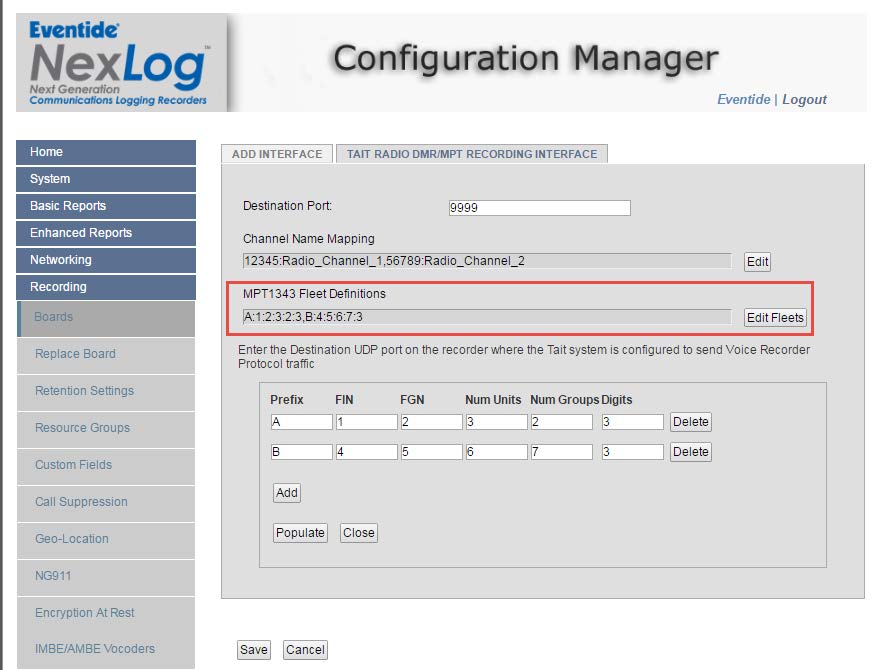
Fig. 6.129 MPT1343 Fleet Definitions¶
Enter Channel Name Mapping(optional): Group IDs and Radio IDs delivered over the wire with MPT/DMR are in MPT1327 Format. You can map an MPT1327 raw input value to a more meaningful channel name. For more information on MPT1337 and MPT1343 formatting, please see: https://en.wikipedia.org/wiki/MPT-1327
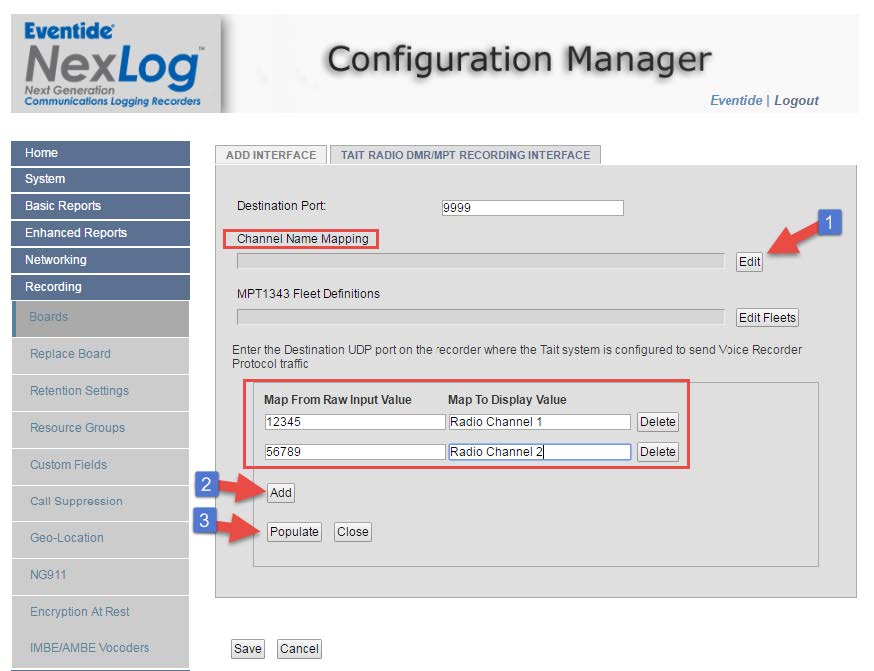
Fig. 6.130 Channel Name Mapping¶
After filling in all the fields, Select Save. The NexLog will now attempt to save the template data and initialize for recording.
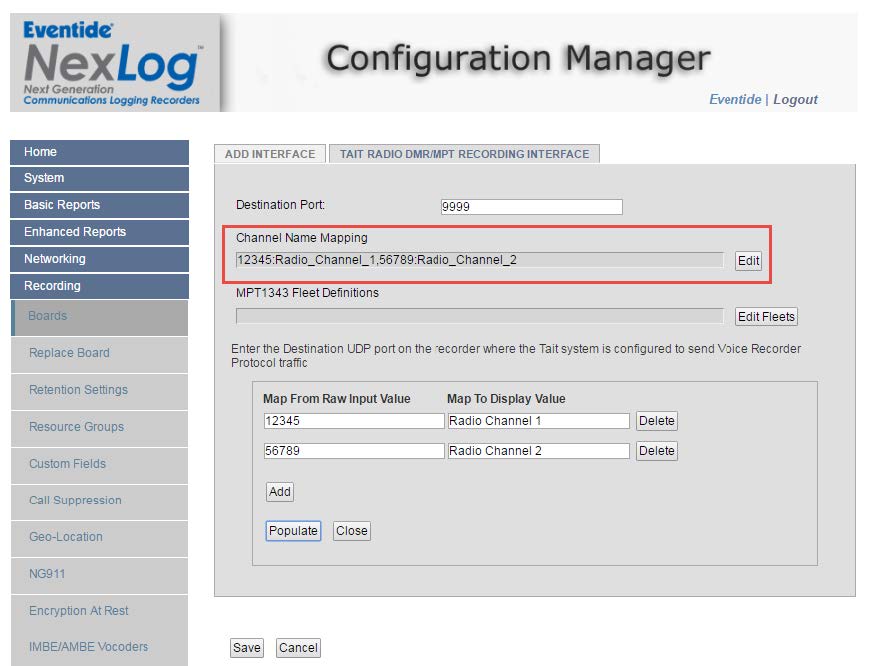
Fig. 6.131 Channel Name Mapping¶
6.15.2.1. Configure IMBE/AMBE Transcoder IP(s)¶
License Required
DVSI will require a “Num Internal Vocoder Resources” add-on license key. Contact your Eventide Communications Dealer for assistance.
P25 Systems and some DMR systems utilize IMBE/AMBE low bit rate encoding for recording. As a result, it is required to have at least one IMBE/AMBE vocoder (DVSI) resource available, which is used for playback of IMBE/AMBE encoded files.
There can be one or more IMBE/AMBE vocoders in the environment, each one’s unique IP address or internal status needs to be entered on the IMBE/AMBE configuration page. (Shown below).
6.15.2.2. Check for Alerts¶
Check the NexLog front panel and/or configuration manager (figure below) for any system alerts or Tait Radio specific alerts. There will be alerts specific to the Tait Radio integration if there are problems with downloading talk groups, managing crypto keys and OTAR.
6.15.2.3. Verify Recording¶
Place a series of test calls between radios on both encrypted and unencrypted talk groups. Use MediaWorks DX or the front panel display to verify recording of all test calls.